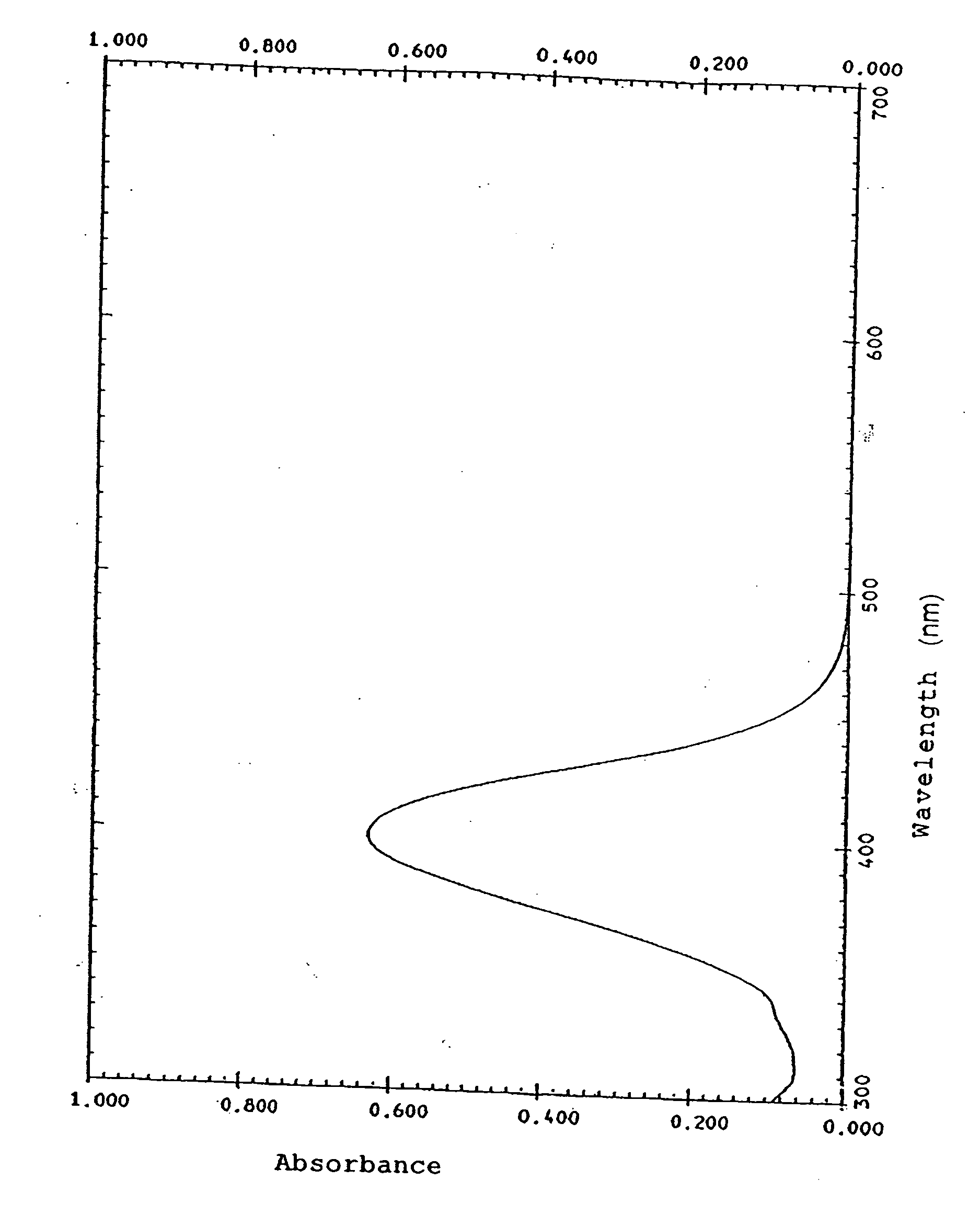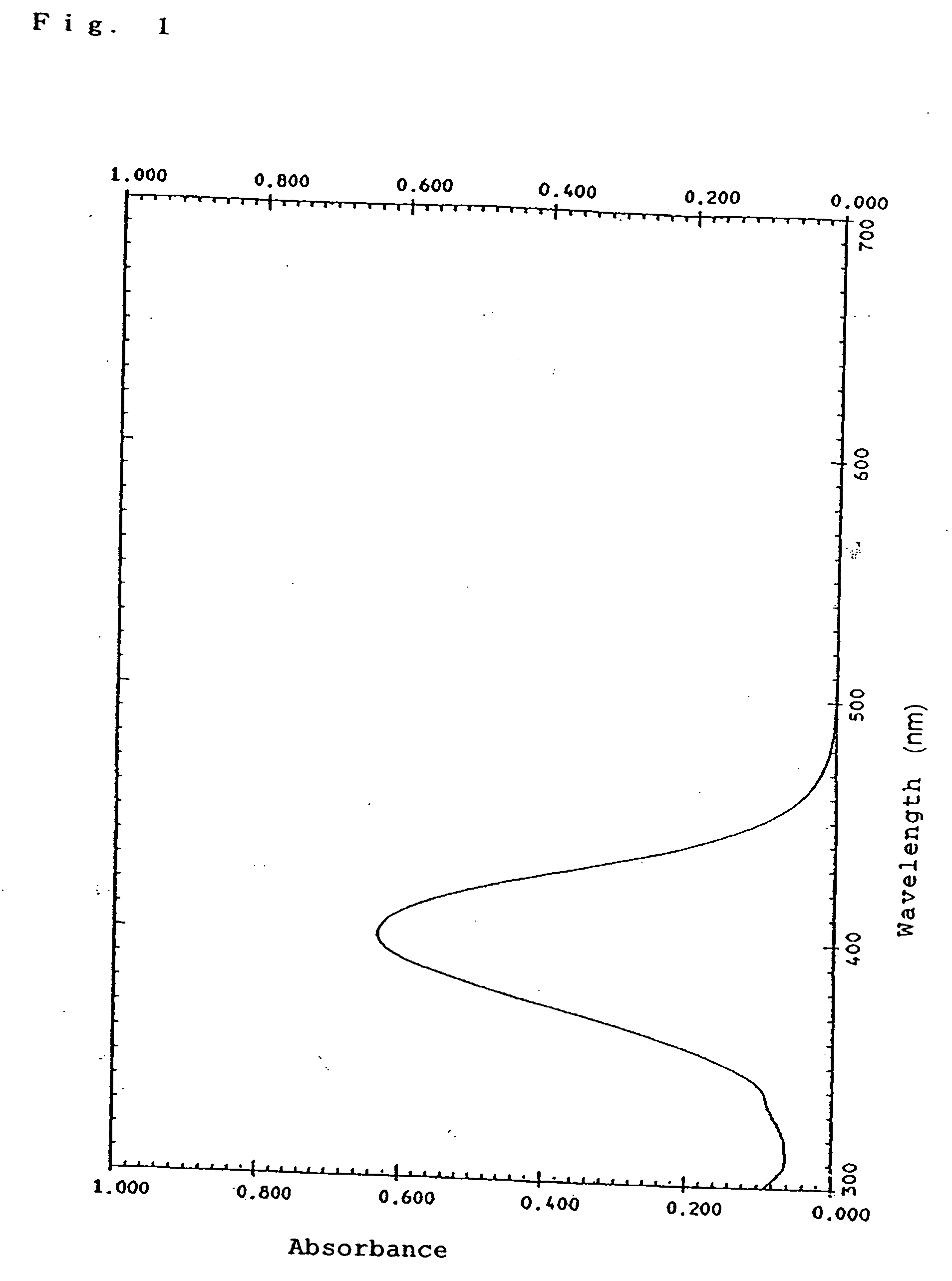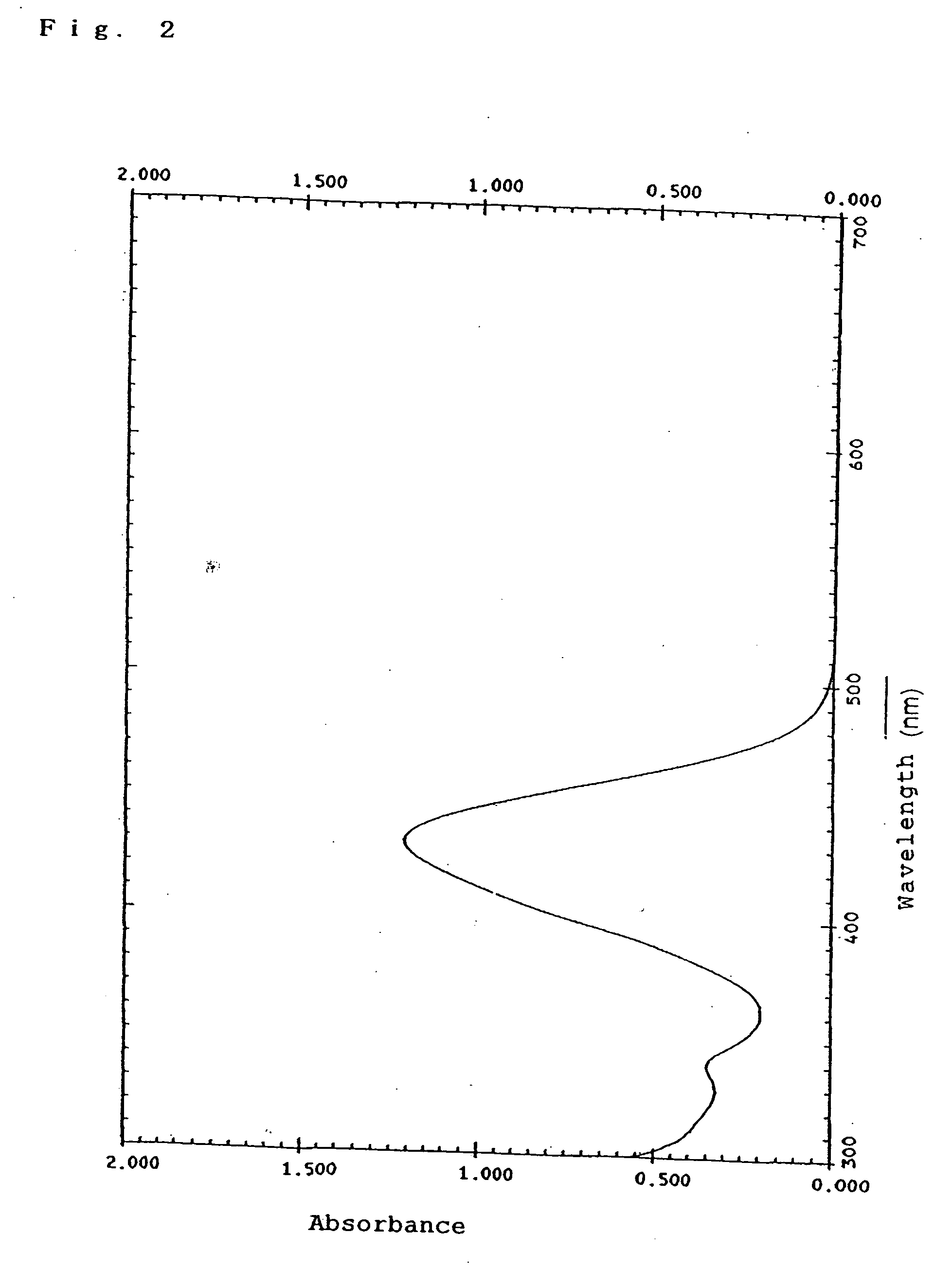Organic dye, photoelectric conversion material, semiconductor electrode and photoelectric conversion device
a technology of photoelectric conversion device and organic dye, which is applied in the direction of sustainable manufacturing/processing, final product manufacturing, electrochemical generators, etc., can solve the problems of annihilation of human species, high production cost of solar cells, and complex purification steps
- Summary
- Abstract
- Description
- Claims
- Application Information
AI Technical Summary
Benefits of technology
Problems solved by technology
Method used
Image
Examples
synthesis example v-1
Synthesis of Compound (F-2)
[0107] N,N-Dimethylformamide (21.4 g) was placed in a flask and stirred with cooling on an ice bath, and phosphorus oxychloride (13.3 g) was dropwise added over 15 minutes. The mixture was stirred at the same temperature for 1 hour, and a solution of julolidine (5.1 g) represented by the following (F-1) in N,N-dimethylformamide (10 ml) was dropwise added over 10 minutes. After 1 hour, a reaction mixture was poured into a diluted sodium hydroxide aqueous solution (200 ml), and an organic component was extracted with toluene. The solvent was distilled off, and a residue was purified by silica gel column chromatography, to give the following compound (F-2). 5.3 g. Yield 91%.
example v-1
Synthesis of Compound (A-5) Shown as an Example
[0108] Compound (F-2) (1.0 g), rhodanine-3-acetic acid (0.96 g) and ammonium acetate (0.4 g) were dissolved in 2.0 g of acetic acid, and the mixture was stirred under heat at 120° C. After 30 minutes, when the heating was stopped, the reaction product immediately solidified. The reaction product was cooled to room temperature, and then, water (50 ml) was added. The mixture was stirred, and a crystal was recovered by filtration. The crystal was transferred into a beaker and washed with water (200 ml). The crude crystal was re-crystallized from methyl cellosolve, to give Compound (A-5) shown as an example. 1.3 g. Yield 70%.
example v-2
Synthesis of Compound (A-8) Shown as an Example
[0109] The following Compound (F-3) (10.1 g), rhodanine-3-acetic acid (7.4 g) and ammonium acetate (2.56 g) were dissolved in 15.9 g of acetic acid, and the mixture was stirred under heat at 120° C. After 30 minutes, when the heating was stopped, the reaction product immediately solidified. The reaction product was cooled to room temperature, and then, water (100 ml) was added. The mixture was stirred, and a crystal was recovered by filtration. The crystal was transferred into a beaker and washed with water (500 ml) twice and then washed with 2-propanol (100 ml) twice. The crude crystal was re-crystallized from methyl cellosolve (about 50 ml), to give Compound (A-8) shown as an example. 11.0 g. Yield 66%.
PUM
| Property | Measurement | Unit |
|---|---|---|
| transparency | aaaaa | aaaaa |
| transparency | aaaaa | aaaaa |
| particle diameter | aaaaa | aaaaa |
Abstract
Description
Claims
Application Information
 Login to View More
Login to View More - R&D
- Intellectual Property
- Life Sciences
- Materials
- Tech Scout
- Unparalleled Data Quality
- Higher Quality Content
- 60% Fewer Hallucinations
Browse by: Latest US Patents, China's latest patents, Technical Efficacy Thesaurus, Application Domain, Technology Topic, Popular Technical Reports.
© 2025 PatSnap. All rights reserved.Legal|Privacy policy|Modern Slavery Act Transparency Statement|Sitemap|About US| Contact US: help@patsnap.com



